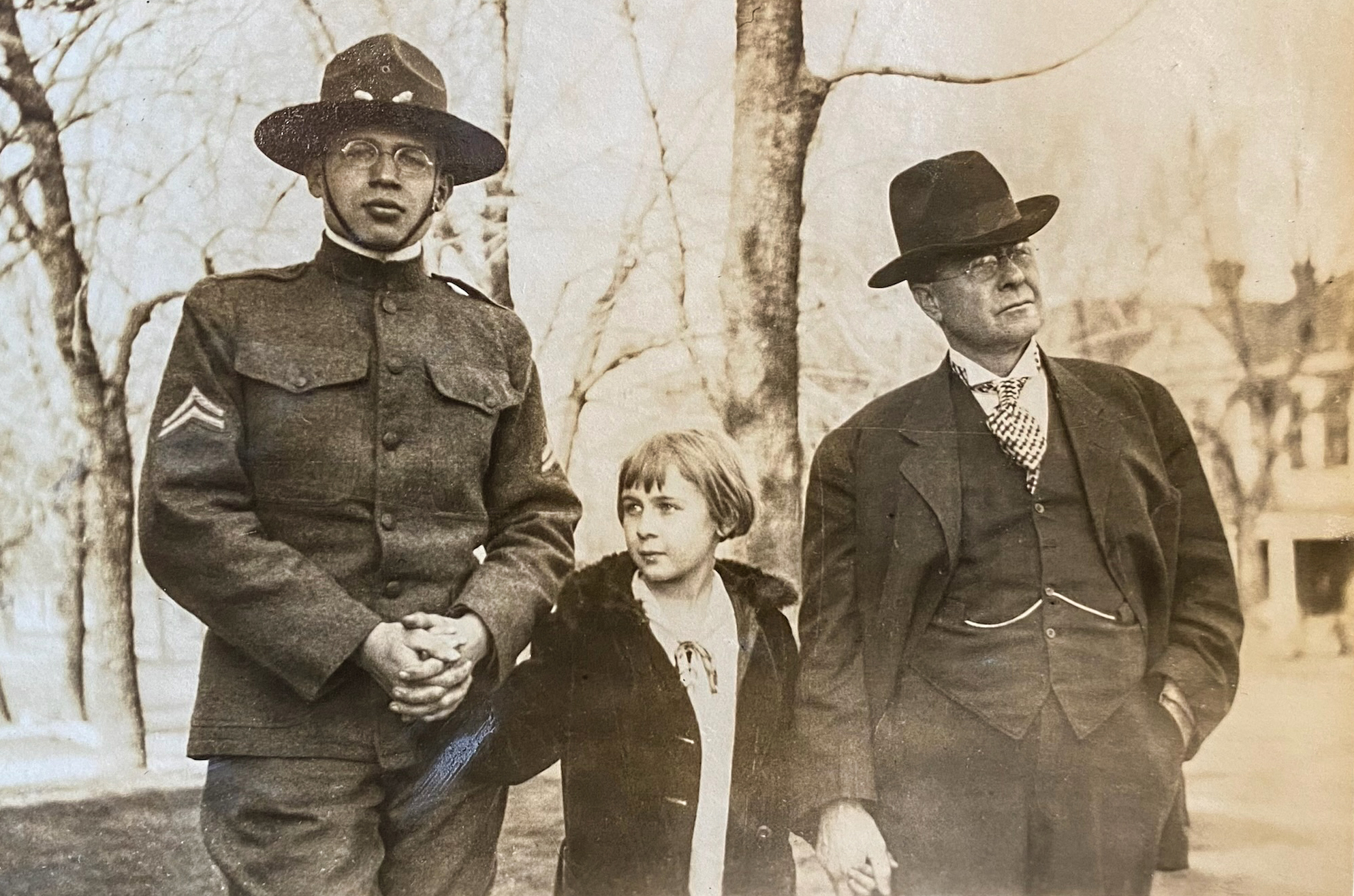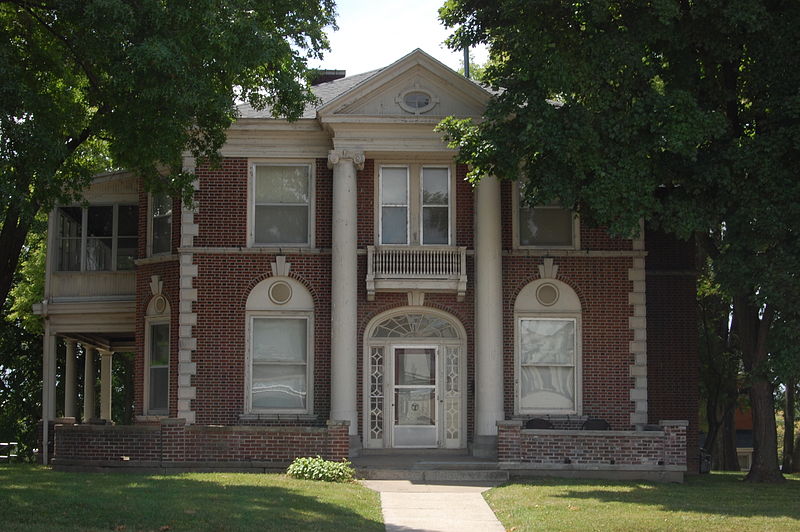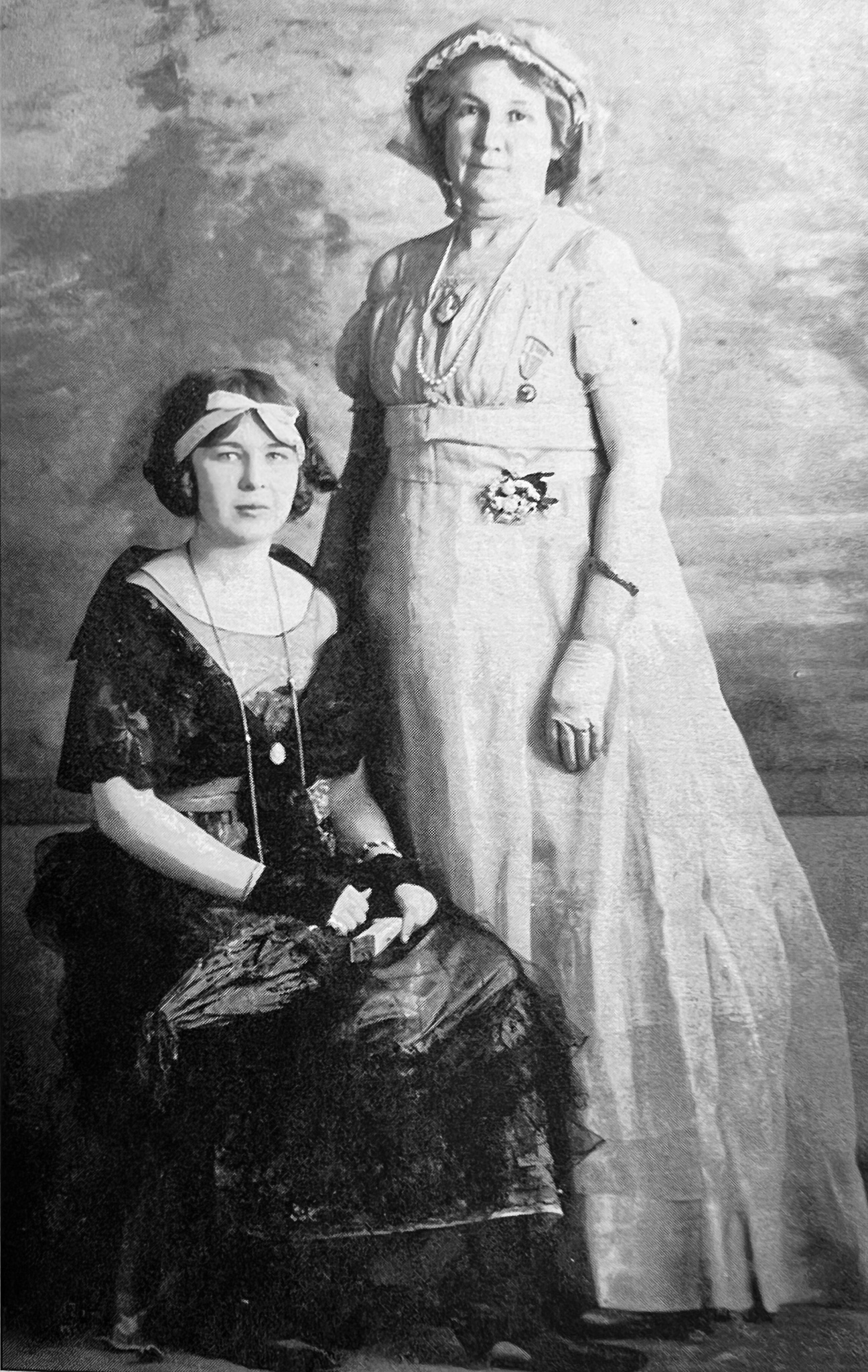Lester Sheperd Parker is mostly remembered as an owner of one of the prison shoe factories. But this might be the least notable of many of the facets of this remarkable man.
He was a lawyer, artist, musician, composer, farmer, miner, world traveler, lecturer, bank president, ice skater, golfer, developer, writer, telephone company founder and president, and a poet. He did not just dabble in these other pursuits; he was remarkably accomplished in many things.
Parker was born in 1860 to George and Ellen Parker in Worcester, Massachusetts. He was 5 when the family moved to 148 W. Taylor St. in Chicago. The address was significant in that it was across the alley from the famous O’Leary barn and the cow that ignited the Great Chicago Fire of 1871. The Parker home was the first casualty. On the occasion of the 50th anniversary of the fire, Parker penned a letter to the mayor of Chicago with his reminiscences. As there was demand for souvenirs of the fire, he recalled, “I made my first money selling wisps of hair from the tail of the cow who kicked over the lamp.”
From the interesting story of Parker’s life on the ParkersPlaceJC.com website, Lester finished his schooling “with a background in law.” At the age of 19, he moved to Salina, Kansas, and prospered in the practice of law and as a sheep and cattle rancher. It was here he met his first wife, Katie Lochard. This union produced three children: Grace, born in 1884; Clyde, in 1887; and Daniel, in 1889. The young Parker family finally settled in Jefferson City by 1887.
Tragedy would strike the family, first in November of 1890 with the death of Parker’s wife, Katie at age 27. Then again in April of 1891 with the death of 3-year-old Clyde. They are buried next to each other in Woodland Old City cemetery.
Four years later in a quiet ceremony, Parker married Mary Susan O’Bannon, daughter of a state representative from Cass County. Their daughter Alice was born in 1895 and Lester Jr. in 1898. But tragedy struck again when Sue died in 1899 of peritonitis. She was 34.
By 1880, cheap prison labor drew industrialists to Jefferson City. The state of Missouri wanted its prison system to be self-sustaining and provided factory space within the prison yards, hiring out inmate labor well below market rates. Having learned the shoe manufacturing business from his father, Parker seized upon this golden opportunity. He organized Jefferson Shoe Company inside the walls, then sold his interest in Jefferson Shoe to form the L.S. Parker Boot and Shoe Company in 1895. According to Gary Kremer’s Heartland History Vol. 2, “By 1900, the L.S. Parker Shoe Company employed 230 people and had a backlog of orders for 65,000 pairs of shoes.”
In a timely move, he sold his shoe company in 1913, just two years before the state discontinued the practice of hiring out inmate labor within the walls.
Although Parker acquired wealth from many sources, it was his prison factory that financed his magnificent mansion at 624 E. Capitol Ave. in 1905. By this time, he had remarried for a third time to Missouri “Zue” Gordon. Their only child, Rachel, was born in 1908. By the 1910 census, the Parker house was full of life. Besides Lester and Zue, there were Rachel, 2; Lester Jr., 12; Alice, 15; Daniel, 21; and two live-in servants. The oldest of Parker’s children, Grace, 26, had left home by this time.
After retiring from the shoe business, he became fully indulged in his right brain inclinations — art, poetry, music. His watercolors and oils of the Capitol and scenes from his travels abroad were well-regarded. According to the ParkersPlaceJC.com website, he may have studied at an art academy in Paris and reportedly donated more than 100 works of art to the First Baptist Church, of which he was an active member.
He wrote several books. “Nancy McIntyre, a Tale of the Prairies,” a 107-page poem was one of his more popular. It was dedicated to his “Wee Daughter” Rachel.
He sang and composed many songs, one of which “Come Back My Honey to Missouri,” was considered for the State song, but lost out to “Missouri Waltz.”
His greatest legacy to Missouri was his prominent role as adviser to the Capitol Decoration Commission that was tasked with coordinating the artwork for the new Capitol building that replaced the one that burned in 1911. This was done against strong headwinds of opposition to spending state money on art. Today, Missouri’s Capitol is recognized widely for its outstanding art.
In 1925, a week after surgery at the Mayo Clinic, Lester Parker died from a blood clot. He was thus spared yet another tragedy. Zue and Rachel died in a car accident in 1931 while en route to Kansas City to visit Zue’s sister. They lie next to Lester at Riverview Cemetery.
It was said at Lester’s eulogy, “No other man did more to make Missouri’s Capitol artistically perfect and a testimonial to the taste and intelligence of the generation that built it than Mr. Parker.”
Jenny Smith is a regular contributor to this feature. She acknowledges Gary Kremer’s Heartland History, the ParkerHousejc.com website and the NRHP nomination of the Parker House in 2000 in the preparation of this story.




